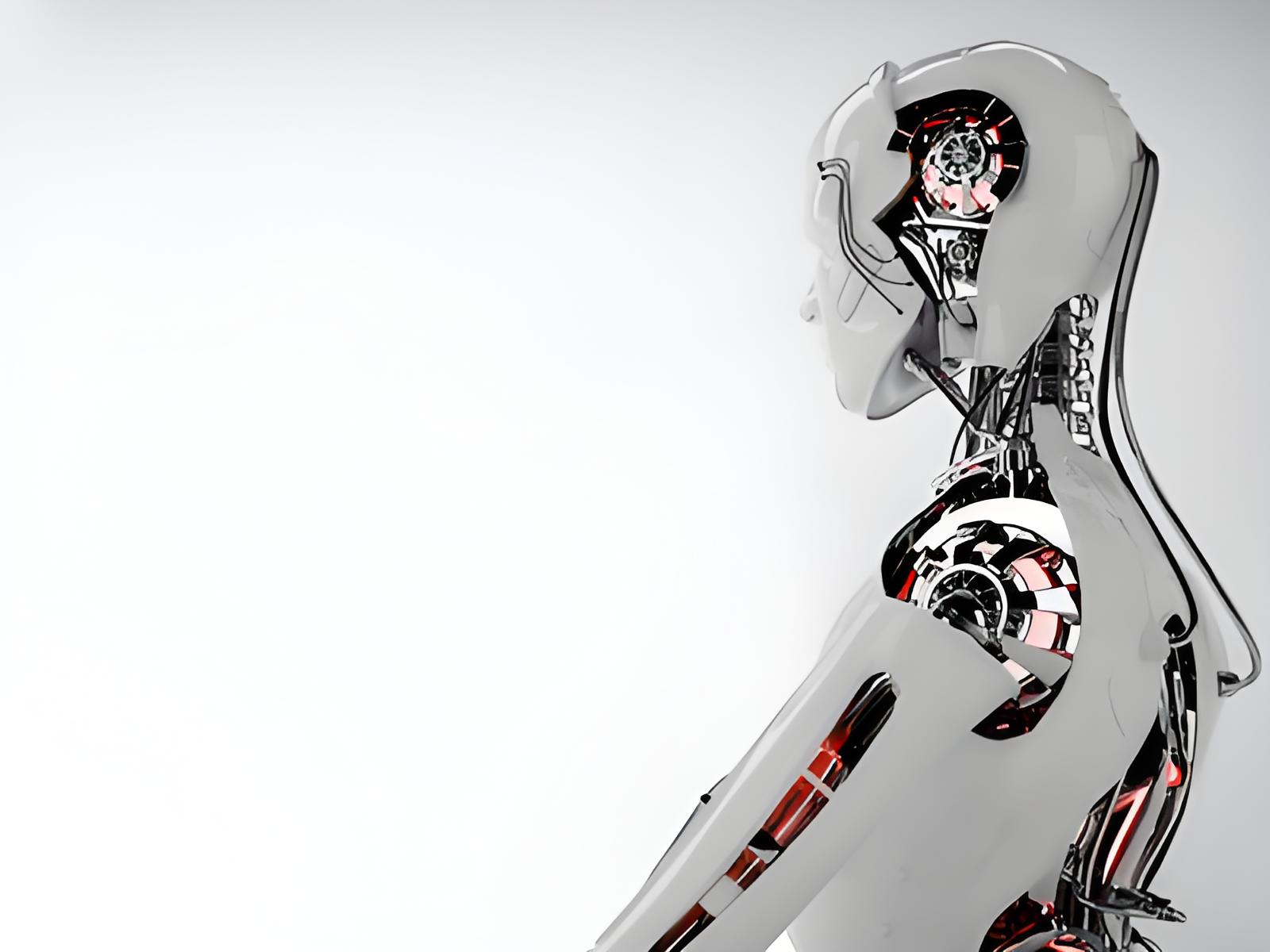Humanoid robots have moved from the laboratory to commercial mass production, and balancing lightweight and structural strength has become a core challenge.
As a metal material that combines lightweight, high strength, and corrosion resistance, aluminum is achieving large-scale penetration in key parts such as joints, skeletons, transmission systems, and shells of humanoid robots.
As of the end of 2024, the global demand for aluminum alloys in the humanoid robot industry has surged by 62% year-on-year, becoming another explosive field for aluminum applications after new energy vehicles.
The comprehensive performance of aluminum alloy makes it the preferred metal material for humanoid robots. Its density is only one-third of steel, but it can achieve strength comparable to some steel through alloy ratio and process optimization. For example, the specific strength (strength/density ratio) of 7 series aviation aluminum (7075-T6) can reach 200 MPa/(g/cm ³), which is superior to most engineering plastics, and performs well in heat dissipation and electromagnetic shielding.
In the iteration of Tesla Optimus-Gen2, its limb skeleton is reduced by 15% using aluminum magnesium alloy, while maintaining structural rigidity through topology optimization design; Boston Dynamics’ Atlas robot uses high-strength aluminum to create knee joint transmission components to cope with the impact of high-frequency jumps. In addition, the cooling system of the Ubiquitous Walker X adopts a die cast aluminum shell, which utilizes the high thermal conductivity of aluminum (about 200 W/m · K) to achieve efficient thermal management.
Currently, the technological iteration of aluminum in the field of humanoid robots continues to accelerate, and multiple breakthroughs have emerged in various links of the industry chain:

1. Performance leap of high-strength aluminum alloy materials
Following the release of aluminum silicon alloy with a tensile strength of 450MPa in September 2024, Lizhong Group (300428) has obtained aerospace grade certification for its 7xxx series aluminum alloy specifically designed for robots in January 2025. This material has increased its yield strength to 580MPa through microalloying technology while maintaining a 5% elongation rate, and has been successfully applied to the biomimetic knee joint module of Fourier Intelligence, reducing weight by 32% compared to traditional titanium alloy solutions. The all aluminum column body material developed by Mingtai Aluminum Industry (601677) adopts spray deposition forming technology to increase the thermal conductivity of the radiator aluminum material to 240W/(m · K), and has been supplied in bulk as the drive system for Yushu Technology’s H1 humanoid robot.
2. Industrial level breakthrough in integrated die-casting technology
The world’s first 9800T two plate super die-casting production line put into operation by Wencan Corporation (603348) at its Chongqing base has compressed the manufacturing cycle of humanoid robot skeletons from 72 hours to 18 hours. The biomimetic spine skeleton component developed by it has been optimized through topology design, reducing welding points by 72%, achieving a structural strength of 800MPa, and maintaining a yield rate of over 95%. This technology has received orders from North American customers and a factory in Mexico is currently under construction. Guangdong Hongtu (002101) has developed a thin-walled die cast aluminum shell with a wall thickness of only 1.2mm but achieving 30kN impact resistance, which is applied to the chest protection structure of the Uber Walker X.
3. Innovation in precision machining and functional integration
Nanshan Aluminum Industry (600219), in collaboration with the National Engineering Center for Light Alloys at Shanghai Jiao Tong University, will release nano reinforced aluminum based composite materials in February 2025. This material is strengthened by dispersing silicon carbide nanoparticles, reducing the thermal expansion coefficient to 8 × 10 ⁻⁶/℃, successfully solving the accuracy drift problem caused by uneven heat dissipation of servo motors. It has been introduced into the Tesla Optimus Gen3 supply chain. The aluminum graphene composite electromagnetic shielding layer developed by Yinbang Co., Ltd. (300337) has a shielding efficiency of 70dB in the 10GHz frequency band and a thickness of only 0.25mm, which is applied to the head sensor array of Boston Dynamics Atlas.
4. Low carbon breakthrough of recycled aluminum technology
The newly built electronic grade recycled aluminum purification production line of Aluminum Corporation of China (601600) can control the copper and iron impurity content in waste aluminum below 5ppm, and reduce the carbon footprint of the produced recycled aluminum by 78% compared to primary aluminum. This technology has been certified by the EU’s Key Raw Materials Act and is expected to supply LCA (full lifecycle) compliant aluminum materials to Zhiyuan robots starting in Q2 2025.

5. Cross disciplinary technology integration and application
In the expansion of aerospace level scenarios, the biomimetic honeycomb aluminum structure developed by Beijing Iron Man Technology has been verified by Harbin Institute of Technology, reducing the weight of the bipedal robot’s torso by 30% and increasing its bending stiffness by 40%. The structure adopts 7075-T6 aviation aluminum and achieves a specific stiffness of 12GPa · m ³/kg through biomimetic design. It is planned to be used for the space station maintenance robot launched in Q4 2025.
These technological breakthroughs are driving the single machine usage of aluminum in humanoid robots from 20kg/unit in 2024 to 28kg/unit in 2025, and the premium rate of high-end aluminum has also risen from 15% to 35%.
With the implementation of the “Guiding Opinions on Innovative Development of Humanoid Robot Industry” by the Ministry of Industry and Information Technology, the innovation of aluminum materials in the fields of lightweight and functional integration will continue to accelerate. In July 2024, the Ministry of Industry and Information Technology issued the “Guiding Opinions on Innovative Development of Humanoid Robot Industry”, which clearly stated the goal of “breaking through lightweight materials and precision manufacturing processes”, and included aluminum alloy precision forming technology in the key research and development list.
At the local level, Shanghai will establish a special fund of 2 billion yuan in November 2024 to support the research and industrialization of core materials for humanoid robots, including high-performance aluminum materials.
In the academic field, the “biomimetic honeycomb aluminum structure” jointly developed by Harbin Institute of Technology and China Aluminum Research Institute was validated in January 2025. This structure can reduce the weight of robot torso by 30% while improving bending stiffness by 40%. The related achievements have entered the stage of patent industrialization.
According to the GGII Institute of Robotics, the global aluminum consumption for humanoid robots will be approximately 12000 tons in 2024, with a market size of 1.8 billion yuan. Assuming that the aluminum consumption of a single humanoid robot is 20-25kg (accounting for 30% -40% of the total weight of the machine), based on the estimated global shipment of 5 million units by 2030, the demand for aluminum will climb to 100000-125000 tons, corresponding to a market size of approximately 15-18 billion yuan, with a compound annual growth rate of 45%.
In terms of price, since the second half of 2024, the premium rate of high-end aluminum materials for robots (such as aviation grade aluminum plates and high thermal conductivity die cast aluminum) has increased from 15% to 30%. The unit price of some customized products exceeds 80000 yuan/ton, significantly higher than the average price of industrial aluminum materials (22000 yuan/ton).
As humanoid robots iterate at a rate of over 60% per year, aluminum, with its mature industrial chain and continuously optimized performance, is transitioning from traditional manufacturing to the high value-added track. According to the Toubao Research Institute, from 2025 to 2028, China’s aluminum market for robots will account for 40% -50% of the global market share, and local enterprises’ technological breakthroughs in precision molding, surface treatment, and other aspects will become key winners and losers.
Post time: Mar-28-2025
